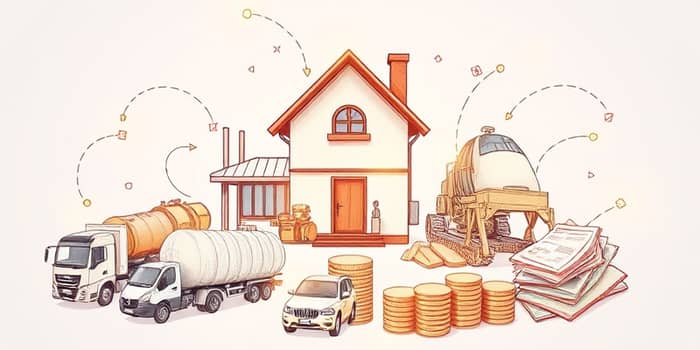
Securing a loan often hinges not just on credit scores or business plans but on the tangible value of assets offered as security. Whether you are a lender safeguarding capital or a borrower seeking fair terms, understanding how to accurately assess collateral value is essential for building trust and ensuring long-term success.
Collateral serves as the lender’s safety net and the borrower’s pledge of good faith. By offering an asset—be it property, equipment, or financial instruments—borrowers demonstrate commitment to repayment. In this system, the lender gains confidence while the borrower often benefits from lower interest rates compared to unsecured borrowing.
From the lender’s perspective, assets with high liquidity mitigate risks by offering quick conversion to cash if necessary. For borrowers, acceptable collateral can unlock capital at more affordable rates, fostering growth and opportunity.
At the heart of secured lending lies the collateral’s value. This determination influences the loan amount, known as the Loan-to-Value ratio directly impacts the proportion of funding approved. A higher collateral value relative to the loan reduces risk, often translating to more favorable terms for both parties.
Consider a scenario where a small business owner pledges equipment worth $200,000 to secure an $100,000 line of credit. Here, the 50% LTV ratio reflects conservative lending, protecting the lender against market fluctuations while providing the borrower with the liquidity needed to expand operations.
Various valuation methods help lenders arrive at a fair market value. The most common approaches include:
In many jurisdictions, particularly under regulations like the EU’s CRR III effective in 2025, independent professional appraisal ensures accuracy by eliminating speculative gains and focusing on sustainable market values over the loan’s lifetime.
The Loan-to-Value (LTV) ratio measures the loan amount as a percentage of the collateral’s appraised value. It is calculated as:
LTV = (Loan Amount) / (Collateral Value) × 100%
A lower LTV indicates a buffer for the lender. For example, an $800,000 mortgage on a $1,000,000 property yields an 80% LTV, which is often the upper limit for conventional financing.
Lenders categorize collateral based on liquidity, depreciation rates, and market demand. Typical advance rates include:
These ranges reflect lender strategies to apply a haircut to account for conservative valuation prevents future shortfalls and potential forced-sale conditions.
Beyond pure value, lenders assess how quickly and reliably an asset can be liquidated. High-demand assets such as prime real estate or blue-chip securities often command higher LTVs. Conversely, specialized machinery, artwork, or niche inventory might face deeper discounts due to uncertain resale markets.
Other critical factors include:
Regulators worldwide are tightening rules around real estate valuations and risk-weighted assets. For instance, EU banks under CRR III must use periodic revaluation maintains collateral adequacy and rely on independent valuers without allowing speculative future price increases.
These changes aim to bolster financial stability by ensuring that collateral values remain aligned with market realities over long-term loan cycles.
Common pitfalls in collateral valuation include overvaluation, failure to account for depreciation, and neglecting lien perfection. To mitigate these risks:
A regional lender recently encountered a challenge when a borrower defaulted on a line secured by used construction equipment. The lender had applied a 75% advance rate but underestimated the depreciation and limited resale market for specialized machinery. The recovery process highlighted the need for conservative valuation prevents future shortfalls and reinforced the importance of tailored LTV ratios.
In another instance, a homeowner secured a renovation loan with a 20% equity cushion, resulting in lower interest rates and flexible repayment terms. The lender’s reliance on recent sales data and tax assessments facilitated independent professional appraisal ensures accuracy and bolstered both parties’ confidence in the transaction.
Borrowers seeking favorable terms should:
Lenders can strengthen their position by establishing robust revaluation schedules, applying stress-tested discount rates, and ensuring all legal interests are properly perfected. By prioritizing transparency and adopting assets with high liquidity mitigate risks, both sides can achieve sustainable, mutually beneficial lending relationships.
In a landscape where financial resilience and prudent risk management matter more than ever, mastering the art and science of collateral valuation empowers lenders to safeguard capital and borrowers to access the funding they need for growth. Through rigorous analysis, ethical practices, and strategic foresight, secured lending can flourish as a reliable engine for economic progress.
References













